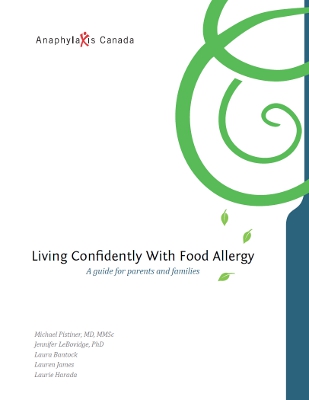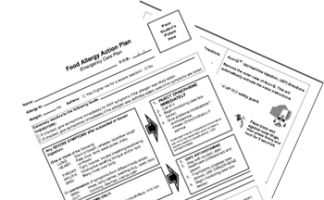When you are prepared to treat an allergic reaction, it makes a real emergency situation less stressful.
Have a written Anaphylaxis Emergency Plan with a picture of your child. Post this plan in a place where you can see it and have a copy available at all times. Any person caring for your child should have a copy. It will be useful to refer to during an emergency. Ask your doctor to help you fill out a copy and explain the emergency steps. You should be able to recognize the symptoms of anaphylaxis and treat your child with an auto-injector.
Learn to use your child’s auto-injector. Talk to your child’s doctor about when and how to use it. Each brand of auto-injector has a website with instructions and videos to help you learn how to use the device. Practice with a training device, which looks like a real auto-injector but does not contain a needle or the drug. This will help you prepare for an emergency and feel more confident about using the auto-injector.
Always have your child’s auto-injector available. If you forget to bring it with you, go home and get it. It is wise to have two doses of epinephrine with your child, because some people may need a second dose during a reaction.15 Discuss this with your doctor.
Use medical identification jewelry. If your child is alone or is unconscious, the identification jewelry gives others credible information about their allergy.

- Teach your child about the possible symptoms of an allergic reaction.
- Tell your child to talk to an adult immediately if they think they may have accidently eaten an unsafe food or feel any symptoms of an allergic reaction.
- Let your child know that you keep their emergency medicine close by. If they have an allergic reaction, using it will help them to feel better quickly. It is never too early to help your child become confident about the use of an auto-injector.
- Talk to your child about the emergency steps, so that going to the hospital won’t be a surprise.
- Help your child to feel more in control by practicing with a training device. Even preschool-aged children learn from medical play, just as they might by playing with a toy stethoscope before visiting their doctor. This can be a great way to make sure they understand about the auto-injector and how it will help them in an emergency.
- Your child may think the needle in the auto-injector is as long as the device. If your child is worried about this, you can tell them it is much shorter. The typical length of an auto-injector needle is less than 1 inch or 2.5 centimeters.
NIH Resource: Guidelines for the Diagnosis and Management of Food Allergy in the United States: Summary For Patients, Family, and Caregivers
AAAAI Resource: Anaphylaxis Emergency Action Plan (English)
AAAAI Resource: Anaphylaxis Emergency Action Plan (Spanish)
AAAAI Resource: Anaphylaxis Card (English and Spanish) pdf
Currently Available Epinephrine autoinjectors in the US:
Adrenaclick
Auvi-Q
EpiPen
Generic Epinephrine Auto-injector
15. Rudders, S.A. et al. “Multicenter study of repeat epinephrine treatments for food-related anaphylaxis.” Pediatrics 125.4 (2010): e711-e718.

